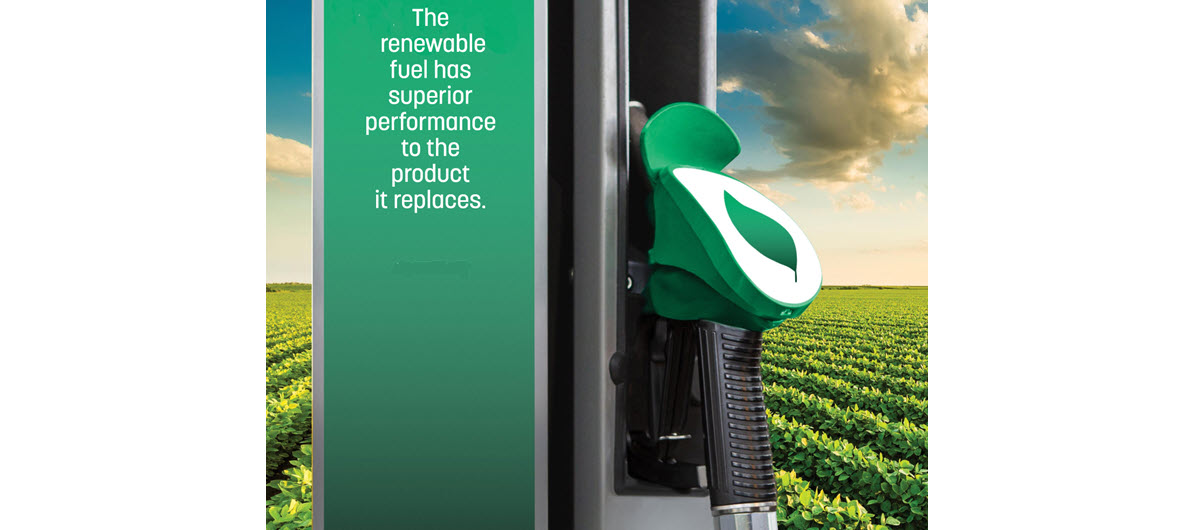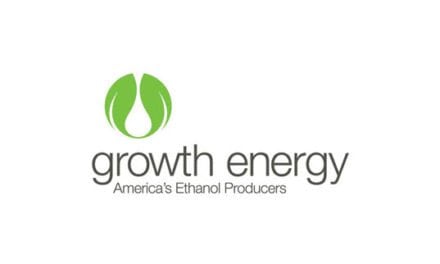By Keith Reid
It’s expected that alternative fuels provide superior carbon reduction over their petroleum counterparts. However, this typically comes with compromises such as lower energy intensity or a greater affinity for water contamination. An exception to the rule is renewable diesel, which is a drop-in replacement for petroleum diesel that improves on many significant performance factors with few compromises in return. It even meets the ASTM D975 specification for petroleum diesel.
Renewable diesel is typically made from the same range of feedstocks as biodiesel, including vegetable oils (soybean, for example) and animal fats. It currently favors waste sources. It is produced through conventional refining processes and existing petroleum refineries can be converted to renewable diesel production.
The Oregon Department of Environmental Quality notes that using renewable diesel can cut lifecycle greenhouse gas emissions up to 85%, depending on the feedstock. Argonne National Laboratory found that emissions for 100% biodiesel (B100) are 74% lower than those from petroleum diesel.
Product Performance
In terms of performance, renewable diesel could be considered the ultimate diesel.
Using Neste MY Renewable Diesel’s product specification, it has a cetane number above 70, whereas neat biodiesel typically has a cetane number between 50 and 60. The cetane number of the allowed biodiesel blends are even lower, closer to petroleum diesel.
Cloud point, which indicates when fuel starts to be affected by cold temperatures, is as low as -40°F (-20°C) for winter grade and 10°F (-12°C) for summer grade, which is superior to both biodiesel and petroleum diesel. It should be noted that the performance factors are impacted by the specific feedstock.
“I’ve not seen another 100% renewable product that has the same properties as a regular diesel,” said Stephen Hightower, president of Hightowers Petroleum Co., a wholesale fuels provider working to expand renewable diesel nationally. “Here you’ve got a -15°F pour point on animal fats. When we start looking at some of these over-the-road vehicles in the northern Midwest states, with the clouding and and gelling and clogging up your filters … well, that problem’s been resolved.”
One of the biggest performance enhancements is related to water contamination.
“It just repels water like crazy,” said Matt Leuck, technical manager, renewable road transportation at Neste, the world’s leading producer of sustainable aviation fuel and renewable diesel. “So, any water that does get into a tank is going to go straight to the bottom of the tank. If you maintain your good housekeeping practices, you’re not going to have water issues or microbial growth issues, either.”
Biofuels tend to have a range of handling issues. These tend to be minor and are most often linked to the “scouring” properties of the new fuel entering a traditional and well-used petroleum environment. Renewable diesel lacks those concerns.
“It is easier than biodiesel, and I’m a big fan of biodiesel,” said Mark Fitz, president of StarOilco, a full-service oil company with extensive experience in biofuels that serves the Portland, Oregon, area. “You drop it in, you can mix it with diesel—no worries. If you go to biodiesel, and you’ve always had diesel in your tank, it’s going to wash a bunch of stuff out your tank. When you move to R99, you will notice no difference.”
Product Cost
The most significant downside that renewable diesel shares with other alternatives is a higher cost compared to its petroleum counterparts. Credits make the product viable in markets where some form of Low Carbon Fuels Standard (LCFS) has been implemented.
The Wall Street Journal noted that a producer of renewable diesel who sold it in California for the same price as petroleum diesel would have lost an estimated $3.88 a gallon in 2022 if not for government incentives averaging $4.59 a gallon.
For the markets such as California, Oregon and Washington state where LCFS comes into play, and when combined with other federal or state credits that might be available, price to the customer is usually not an issue.
However, basic supply and demand then comes into play. Renewable diesel production is currently centered on the Gulf Coast refining hub, the West Coast and to some extent the Midwest. The production of renewable diesel is rapidly expanding, but then, so is the demand, as various low carbon programs ramp up, such as expanding fuel requirements to marine applications and new areas such as the Northeast moving toward similar programs.
EIA data shows that the annual production of renewable diesel tripled between 2019 and 2022. It currently stands at 170,000 barrels per day, compared to the overall distillate production of roughly 4.7 million barrels per day. EIA anticipates that amount will double through 2025 as more production comes online. EIA notes that the West Coast could meet most of its distillate fuel needs from renewable diesel by 2025 if production forecasts pan out.
“With all the credits right now, it’s the same price as diesel, if you can get it,” said Fitz. “With all the new product coming online, it’s been wide open the last year at the same price as diesel. Does that last? I would predict we go back to something like a 10-cent premium.” He added that as California’s mandates expand, demand for renewable will increase, keeping the market tight.
“What we’re facing right now is price,” Hightower said. “But I think that’ll take care of itself as we get the volume coming and hopefully get the federal government to recognize that there’s a need for more support.” With the product’s great performance, it can still be viable in markets where price parity doesn’t exist, as long as the spread is not too great.
Because the product has near zero aromatics, it has much cleaner combustion, leading to less soot, carbon monoxide, NOx and far fewer injector deposit issues. DPF issues and regeneration requirements are also reduced. This can be very attractive to fleet operators looking at total cost of ownership.
“We have a customer called Titan Freight in Oregon,” said Leuck. “They’re very meticulous with their data, and they saw a minimum two cents per mile savings basically because they were reducing DPF maintenance and regeneration downtime. They were also extending oil change intervals and saving a ton of money. So, there’s tangible benefits on top of the greenhouse gas reductions. We don’t even have to run detergents in our fuel and we are still able to be Top Tier certified.”
Renewable diesel is a no-brainer for generator applications, even without credit support. The production process produces an oxygen-free fuel with high stability.
“Our fuel is very stable when you look at a diesel molecule,” Leuck said. “We made the first commercial runs of our fuel in 2005, and we still have some of that fuel set aside in drums in Finland. We test them randomly and so far it hasn’t changed.”
Generator operators, particularly those that require substantial gallons like at data centers, have little problem paying extra. Since current volumes are limited, pipeline shipments are inefficient with the transmix loss involved (there are also several regulatory hindrances that need to be addressed). That leaves rail or trucking.
“The biggest issue for us now is we have to rail it across the country,” said Hightower. “And then find appropriate storage in geographically convenient locations. Being somewhat of a first mover, you have different challenges than you will have in the future once it’s adopted and been commercialized financially.”
He noted that there are customers across the country that will pay the premium for the benefits the product provides. “We have some distributors that are 48-state capable that will take a tanker from California to the East Coast for a power generation application. Or take a tanker to the Midwest for an OEM to do testing,” Hightower said.
There are some performance downsides. Energy density is an area where alternatives can come up short compared to their petroleum counterparts, and renewable diesel is no exception. However, the impact is minor, at 3-4%.
Lubricity can be an issue, but one solved through additization or blending with biodiesel (typically at a 5% level).
Legislative Hurdles
The current push for net-zero carbon seems to be ignoring any solution that involves combustion, even if it can be developed to meet the same end goal. Renewable diesel is no exception. Its proponents are working to change that landscape.
“We’re trying to get a national standard that encompasses renewable diesel versus just the state standards,” Hightower said. “It’s almost required that we have some type of subsidy to be more competitive into the marketplace along with the fact that we also have a robust charging infrastructure program as well.”
Hightower is working to educate the Department of Energy, the Department of Transportation and the White House. “It’s just a matter of, you know, making it known, putting it in their minds that this product exists and that we’re here to help them reach their decarbonization goals.”
And, unlike other alternatives, renewable diesel is ready to go from a product, vehicle fleet and infrastructure standpoint.
“Our message right now is you could literally do this tomorrow,” Leuck said. “We call ourselves a today solution—you don’t even have to drain the fuel out of your tank that’s in there right now, much less install charging or a compressor or something else. Literally, just put a different liquid in your tank and you’re getting 75% greenhouse gas reduction overnight.”








